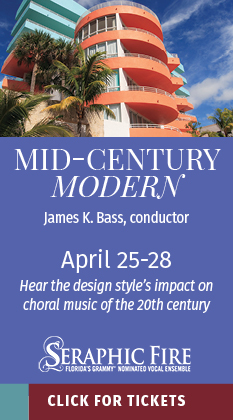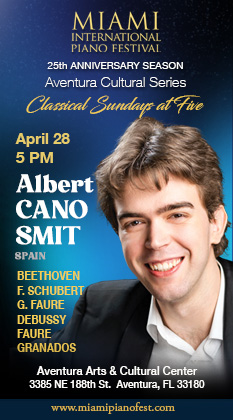Last-minute lineup saves the day for Friends of Chamber Music

As the audience at Gusman Concert Hall listened to a performance of Mozart’s Piano Quartet No. 1 in G Minor on Monday evening, there was little hint of the mighty struggle it took over the past few days to bring that work and this concert to the stage.
The original lineup was to have featured an all-star chamber quintet: pianist Yefim Bronfman, violinists Cho-Liang Lin, and Kyoko Takezawa, violist Roberto Diaz and cellist William De Rosa. When scheduling complications arose with Bronfman and Lin, that was changed to an appearance by the Diaz Trio (violinist Andres Cardenes, violist Diaz and cellist Andres Diaz) with violinist Elmar Oliveira.
Last week, Cardenas, concertmaster of the Pittsburgh Symphony, contracted pneumonia, and Julian Kreeger, president of Friends of Chamber Music of Miami, was forced to revise the program yet again, throwing out the first half, consisting of trios by Beethoven and Dohnanyi.
The veteran impresario worked the phone and assembled a group of performers who could only begin rehearsing the day before the concert, when the well-known violist Roberto Diaz was to land in Miami. Kreeger assembled a fine group, including, in addition to Roberto Diaz, De Rosa and Oliviera, Misha Vitenson, first violinist of the Amernet Quartet, and pianist Tao Lin, on the faculty of Lynn University’s music conservatory.
Given the difficult circumstances, it would be picking nits to focus on any faults — occasionally scrappy violin playing, the tendency of the musicians to go their own way stylistically, and moments of less-than-precise ensemble. This was a highly creditable performance, particularly for a group lashed together at the last minute.
The dramatic, contrapuntal building up to the recapitulation in the first movement of Mozart’s Piano Quartet was powerful and carried off with the corporate unity of a group that had playing together for years. Lin brought off the difficult, concerto-like piano part with elegance. The musicians played with vigor, without a trace of the over-politeness that marks some Mozart performances, and it is was a tribute to their professionalism that they could bring off such a satisfying performance under these circumstances.
The second half was devoted to one of the greatest works of the chamber repertoire, Schubert’s String Quintet in C Major. Unlike most ensembles presented in this series, the musicians were not an established group that had played together for years, and the lack of stylistic and ensemble unity was apparent through most of the performance. But these were all distinguished musicians, and Oliveira, Vitenson, De Rosa, and the Diaz brothers brought off a highly respectable performance.
Like much of the first movement, the beautiful second theme came off too emphatically, without a relaxed, gemütlich quality that seemed to be called for. Oliveira on first violin had some intonation problems, particularly in the Scherzo. But Oliveira’s violin soared in the radiant second movement, over rich tones in the other instruments, and the group played with fiery energy in the energetic finale.
There are many professional chamber music ensembles that tour the world producing highly unified, note-perfect performances. Although the performances Monday didn’t have that perfect unity of interpretation, there’s something to be said for the more spontaneous performances that result when first-rate musicians get together to play chamber music.
Posted in Performances
Leave a Comment
Tue Dec 22, 2009
at 11:32 am
No Comments




